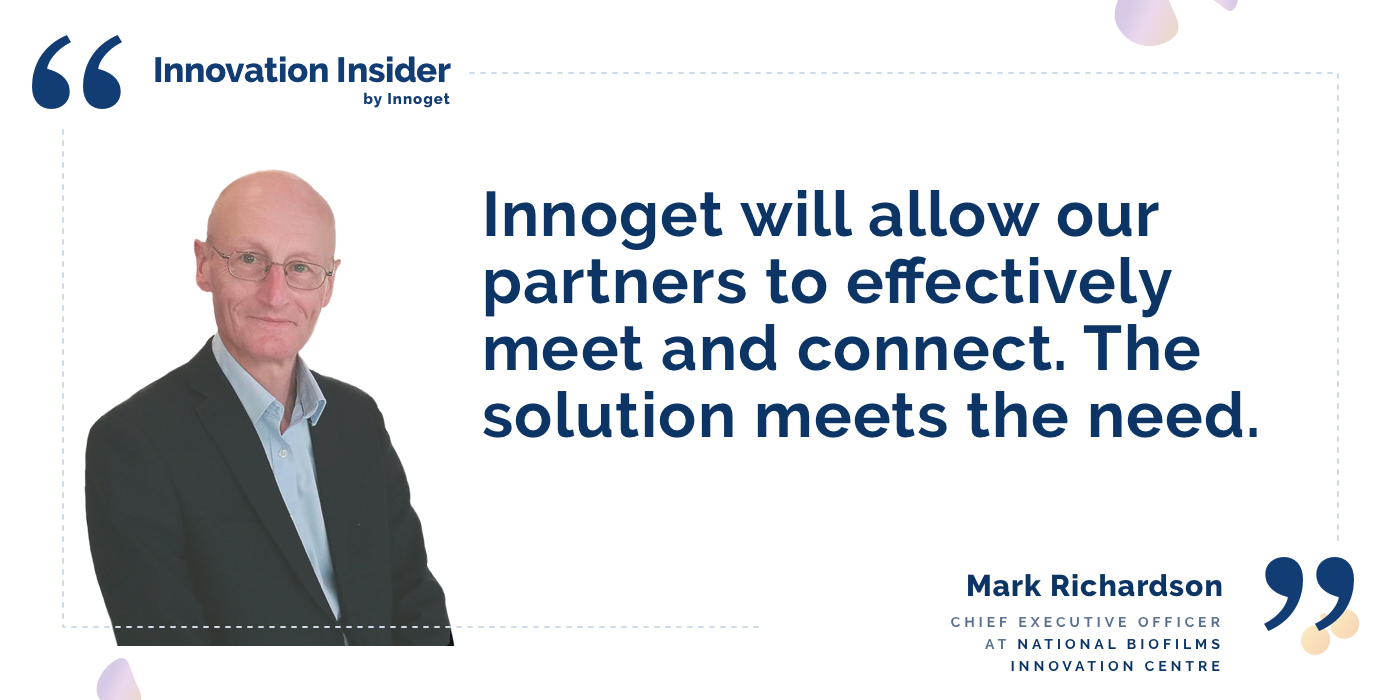In line with our mission to track down Innoget users in the world's most amazing organizations to discover their thoughts on open innovation and technology transfer, where they see is headed, and learn more about how is the innovation culture within their organization, this month we interviewed Mr Mark Richardson, Chief Executive Officer of the National Biofilms Innovation Centre to know more about the future of technology transfer and key elements for a successful implementation of an open innovation strategy.
The National Biofilms Innovation Centre, in short NBIC, was founded in 2017 and its mission is to harness the UK's academic and industrial strength in Biofilms. NBIC is a partnership of 52 UK Research Institutions and over 150 companies, and delivers Research, Innovation (including funding calls with already over 50 funded projects) and Training of future research leaders, all in support of the organization's mission.
Mark, can you briefly describe your role within the National Biofilms Innoavtion Centre and how do you define technology transfer?
My role in the NBIC is to lead the delivery of the goals we have agreed with our Funders in UK Research and Innovation (UKRI). We have an operational team who support our academic co directors in -the delivery of world class science by our fully funded PDRAs -facilitating the translation and adoption of knowledge, science, and technology from our partner institutions into industry and stakeholders -helping to train the next generation of research leaders and industry technologists.

Mark Richardson, Chief Executive Officer at National Biofilms Innovation Centre / Innoget, NBIC
Where do you see technology headed and how do you think Universities can prepare for where it is going?
Technology transfer relies on effective and sustained matching of unmet need and solution, it is vital the university sector listens very hard to the problems and needs of those aiming to translate science for human benefit and delivering economic potential. To do this they must work with industry partners to find a common language, effective collaboration tools, and high levels of trust.
Based on your expertise, what are the key elements to implement a successful technology transfer strategy?
In my opinion some key elements are the following:
• Very clear definition of the benefits any piece of technology has in relation to unmet needs
• Absolute clarity on IPR and its ownership
• A flexibility and adaptability of approach to building a successful partnership
• A belief in team working
What is the open innovation culture like in your organization?
NBIC sits in an Open Innovation ecosystem like the oil in the cogs of a machine and we act to facilitate, catalyse and smooth the ability for academics and industry to create successful equitable partnerships.
Can you share anything about how Innoget helps technology transfer activities?
Innoget will allow our partners to effectively meet and connect. The solution meets the need.








